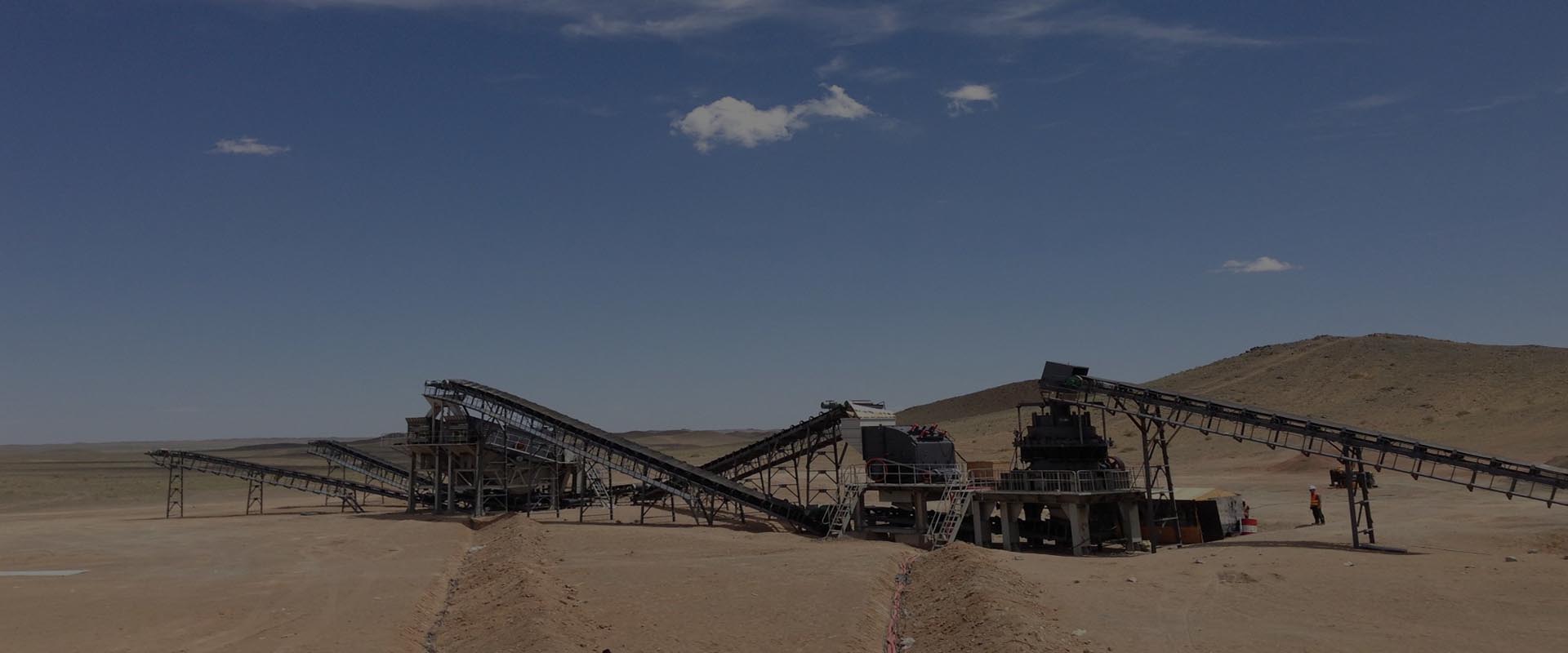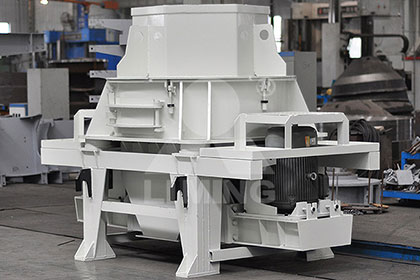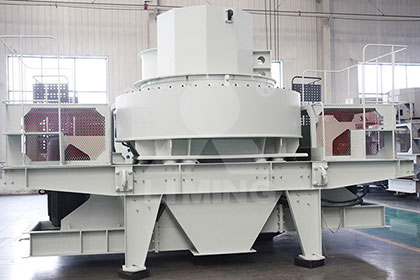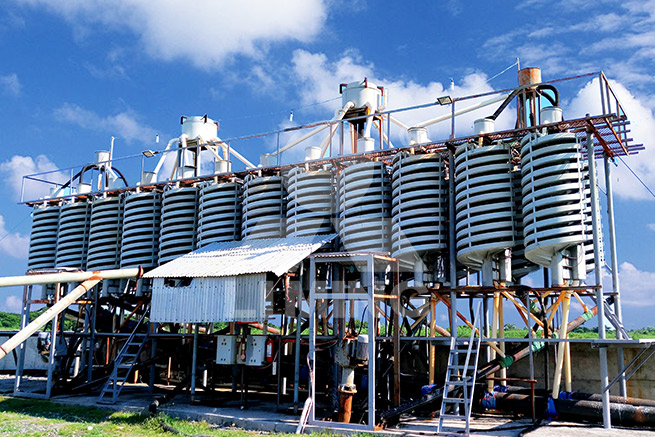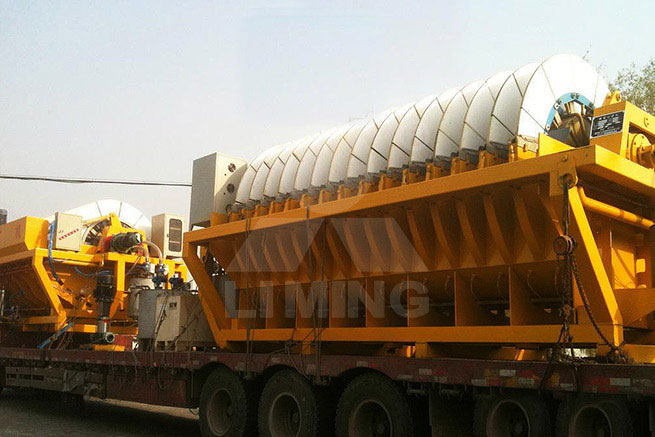separation process of minerals

Separation techniques mineral processing - Big Chemical ...
Separation techniques mineral processing Flotation. Flotation is a gravity separation process which exploits differences in the surface properties of particles. Gas bubbles are generated in a liquid and become attached to solid particles or immiscible liquid droplets, causing the particles or droplets to rise to the surface. This is used to separate mixtures of solid-solid particles and
Read More

Mineral Separation Techniques - ResearchGate
Mineral Separation Techniques ... serve as a guide as to how much of the rock sample you should process. Prior to beginning your work, you should also know (at least in a rough sense)
Read More

Different types of separation methods for minerals | ST ...
This separation can be done either physically, via gravity separation, electrostatic separation and magnetic separation, or chemically, using froth flotation, leaching, and electro winning. Unusable minerals, which are often discarded into dams, are called tailing. In order to understand the benefits of dry mineral processing, you must first ...
Read More

Mineral Comminution and Separation Systems
2020-8-25 · dynamics. Major process operations are largely related to particulate technology and consist of size reduction (or comminution) by crushing and grinding for the liberation of minerals, separation of mineral particles by va rious principles and a number of operations associated with them. However, most of the processes are basically physical (or
Read More

mineral processing | metallurgy | Britannica
mineral processing, art of treating crude ores and mineral products in order to separate the valuable minerals from the waste rock, or gangue. It is the first process that most ores undergo after mining in order to provide a more concentrated material for the procedures of extractive metallurgy.The primary operations are comminution and concentration, but there are other
Read More

Process intensification in the separation of fine minerals ...
2021-2-15 · Process intensification in minerals processing requires single stage technologies. The multistage rougher, cleaner, scavenger paradigm reflects an inherent limitation of existing technologies. Precise control of the forces acting on the particles is
Read More

(PDF) Overview of Mineral Processing Methods
The first process that most of the ores or minerals undergo after they leave any mine, is mineral processing or mineral/ ore dressing. It is a process of ore
Read More

mineral processing - Concentration | Britannica
mineral processing - mineral processing - Concentration: Concentration involves the separation of valuable minerals from the other raw materials received from the grinding mill. In large-scale operations this is accomplished by taking advantage of the different properties of the minerals to be separated. These properties can be colour (optical sorting), density (gravity separation),
Read More

Mineral Processing - an overview | ScienceDirect Topics
Mineral processing, mineral beneficiation, or upgradation involves handling three primary types of ROM material, which have been blasted, fragmented, and brought out from an in situ position. These materials can be used directly or by simple or complex processing and even by applying extractive metallurgy like hydrometallurgical or pyrometallurgical methods.
Read More

Separation techniques mineral processing - Big Chemical ...
Separation techniques mineral processing Flotation. Flotation is a gravity separation process which exploits differences in the surface properties of particles. Gas bubbles are generated in a liquid and become attached to solid particles or immiscible liquid droplets, causing the particles or droplets to rise to the surface. This is used to separate mixtures of solid-solid particles and
Read More

Comprehensive Analysis of Mineral Processing
2019-8-20 · Tungsten, tin, gold and coal are suitable for gravity separation. White tungsten, tin, rutile, tantalum and niobium can be separated by electricity separation. Mineral Processing Flow. Mineral processing is the most important
Read More

Electrostatic Separation of Minerals | Bunting - Redditch
2020-6-1 · Electrostatic separation enables the separation of a wide range of minerals and this example, separating Pyrite from Silica Sand, provides a good example of the separation process. A feed of conducting (Pyrite FeS 2) and non-conducting (Silica Sand SiO 2) powders is fed via a vibratory feeder onto an earthed, stainless-steel roll revolving at a ...
Read More

Heavy Mineral Analysis - Technique - Heavy mineral
Heavy mineral Separation . The separation of heavy minerals from the majority of light minerals is done by immersion in a heavy liquid with a specific density of 2.8g/ml. Cleaning. Before starting the actual separation process, the samples need to be cleaned. Adhering clays or cement are removed in an ultrasound bath by adding a dispersant like ...
Read More

25.4 Separating minerals from waste | Mining of mineral ...
Some minerals require a physical and/or chemical process to remove them from the ore. Large rocks containing minerals need to be crushed and milled. The valuable minerals are then separated from the rock using a variety of physical and chemical separation methods.
Read More

Separation and Purification of Mineral Salts from ...
2020-8-6 · Electrostatic separation is a class of material processing technologies commonly used for the sorting of coarse mixtures by means of electrical forces acting on charged or polarized particles. Most if not all of the existing tribo-electrostatic separators had been initially developed for mineral ores beneficiation. It is a well-known process
Read More

Separation process of iron ore,iron ore magnetic ...
2020-9-8 · Separation process of iron ore. 09-08-20; 1,143 Views; icon 1; Separation process of iron ore . At present, there are about 300 kinds of iron-bearing minerals found in nature.
Read More

mineral processing - Concentration | Britannica
mineral processing - mineral processing - Concentration: Concentration involves the separation of valuable minerals from the other raw materials received from the grinding mill. In large-scale operations this is accomplished by taking advantage of the different properties of the minerals to be separated. These properties can be colour (optical sorting), density (gravity separation),
Read More

SEPARATION EXPERTISE FOR YOUR SUCCESS IN THE
any separation challenge The mining and minerals industry demands unique capabilities from technology suppliers. Starting with your process requirements and mineral characteristics, we provide an unmatched combination of expertise and technologies to master your separation, drying, and automation challenges. THE BEST FIT FOR ANY REQUIREMENT
Read More

Study on the separation process of non-metallic inclusions
The separation process of non-metallic inclusions at the steel-slag interface was simulated by physical modeling. Three different kinds of particles (octahedral, plate-like, and spherical) and three different oils (kerosene, bean oil, and pump oil) were used to
Read More

Separation techniques mineral processing - Big Chemical ...
Separation techniques mineral processing Flotation. Flotation is a gravity separation process which exploits differences in the surface properties of particles. Gas bubbles are generated in a liquid and become attached to solid particles or immiscible liquid droplets, causing the particles or droplets to rise to the surface. This is used to separate mixtures of solid-solid particles and
Read More

Heavy Mineral Analysis - Technique - Heavy mineral
Heavy mineral Separation . The separation of heavy minerals from the majority of light minerals is done by immersion in a heavy liquid with a specific density of 2.8g/ml. Cleaning. Before starting the actual separation process, the samples need to be cleaned. Adhering clays or cement are removed in an ultrasound bath by adding a dispersant like ...
Read More

Electrostatic Separation of Minerals | Bunting - Redditch
2020-6-1 · Electrostatic separation enables the separation of a wide range of minerals and this example, separating Pyrite from Silica Sand, provides a good example of the separation process. A feed of conducting (Pyrite FeS 2) and non-conducting (Silica Sand SiO 2) powders is fed via a vibratory feeder onto an earthed, stainless-steel roll revolving at a ...
Read More

Separation and Purification of Mineral Salts from ...
2020-8-6 · Electrostatic separation is a class of material processing technologies commonly used for the sorting of coarse mixtures by means of electrical forces acting on charged or polarized particles. Most if not all of the existing tribo-electrostatic separators had been initially developed for mineral ores beneficiation. It is a well-known process
Read More

SEPARATION EXPERTISE FOR YOUR SUCCESS IN THE
any separation challenge The mining and minerals industry demands unique capabilities from technology suppliers. Starting with your process requirements and mineral characteristics, we provide an unmatched combination of expertise and technologies to master your separation, drying, and automation challenges. THE BEST FIT FOR ANY REQUIREMENT
Read More

Mineral Sands Process Development
2016-12-20 · 6 | ALS Metallurgy - Mineral Sands Process Development Heavy Liquid Separation This type of gravity separation is also known as “sink-float” separation. The heavier particles will sink and effect sharp separation of the heavy and light particles. In practice, the dense media (i.e. bromoform at 2.84-2.89, tetrabromomethane
Read More

Two Factors Affect the Magnetic Separation Process - Xinhai
2019-8-23 · As one of the common mineral processing technologies, magnetic separation method is widely used in the separation of magnetite, manganese, ilmenite and other magnetic minerals by virtue of the advantages of simple equipment and good separation effect. But do you know how many factors affecting the magnetic separation process? And How does each factor
Read More

Study on the separation process of non-metallic inclusions ...
2017-5-28 · The separation process of non-metallic inclusions at the steel–slag interface was simulated by physical modeling. Three different kinds of particles (octahedral, plate-like, and spherical) and three different oils (kerosene, bean oil, and pump oil) were used to model inclusions and slags, respectively. The effects of inclusion geometry (shape and size) and slag
Read More

Study on the separation process of non-metallic inclusions
The separation process of non-metallic inclusions at the steel-slag interface was simulated by physical modeling. Three different kinds of particles (octahedral, plate-like, and spherical) and three different oils (kerosene, bean oil, and pump oil) were used to
Read More

Magnetic separation of mineral particles from shale oil ...
Oil shale mineral solids are separated from a fluid in a process comprising heating the mineral solids to at least the magnetic transformation temperature of a portion of the solids and thereafter magnetically separating mineral solids from the feed. High gradient magnetic separation techniques are preferred.
Read More
- << Previous:Dampak Crusher Dijual Di Indonesia
- >> Next:Impact Crusher Proved
